Shoulder
Home » Shoulder
ROTATOR CUFF INJURY
Symptoms of a Rotator Cuff Injury
What Causes Rotator Cuff Injuries?
Treating Rotator Cuff Injuries at Advanced Pain Relief Clinic
Diagnosing Rotator Cuff Injuries
A proper diagnosis is at the heart of proper treatment. Assessing the range of motion and strength of affected area will asssit us in coming a proper working diagnosis and in many cases allow us to begin caring for the affected area. In many cases x-rays, Ultrasounds and MRIs are ordered to confirm the diagnosis or direct appropriate care.
If you are suffering acute or chronic shoulder pain, inability to lift your arm and restricted range of motion, call Advanced Pain Relief Clinic today to schedule an appointment with Dr. Moona and his team.
ROTATOR CUFF TENDINITIS
What is rotator cuff tendinitis?
- swimmer’s shoulder
- pitcher’s shoulder
- tennis shoulder
What are the symptoms of rotator cuff tendinitis?
The symptoms of rotator cuff tendinitis tend to get worse over time. Initial symptoms may be relieved with rest, but the symptoms can later become constant. Symptoms that go past the elbow usually indicate another problem.
Symptoms of rotator cuff tendinitis include:
- pain and swelling in the front of your shoulder and side of your arm
- pain triggered by raising or lowering your arm
- a clicking sound when raising your arm
- stiffness
- pain that causes you to wake from sleep
- pain when reaching behind your back
- a loss of mobility and strength in the affected arm
CALCIFIC TENDINITIS
What is calcific tendonitis?
SHOULDER PAIN
If your shoulder pain hasn’t been described above, don’t fret. We have a team of dedicated health care professionals that can help you reach a diagnosis and offer effective solutions to improve your function and reduce your pain.
